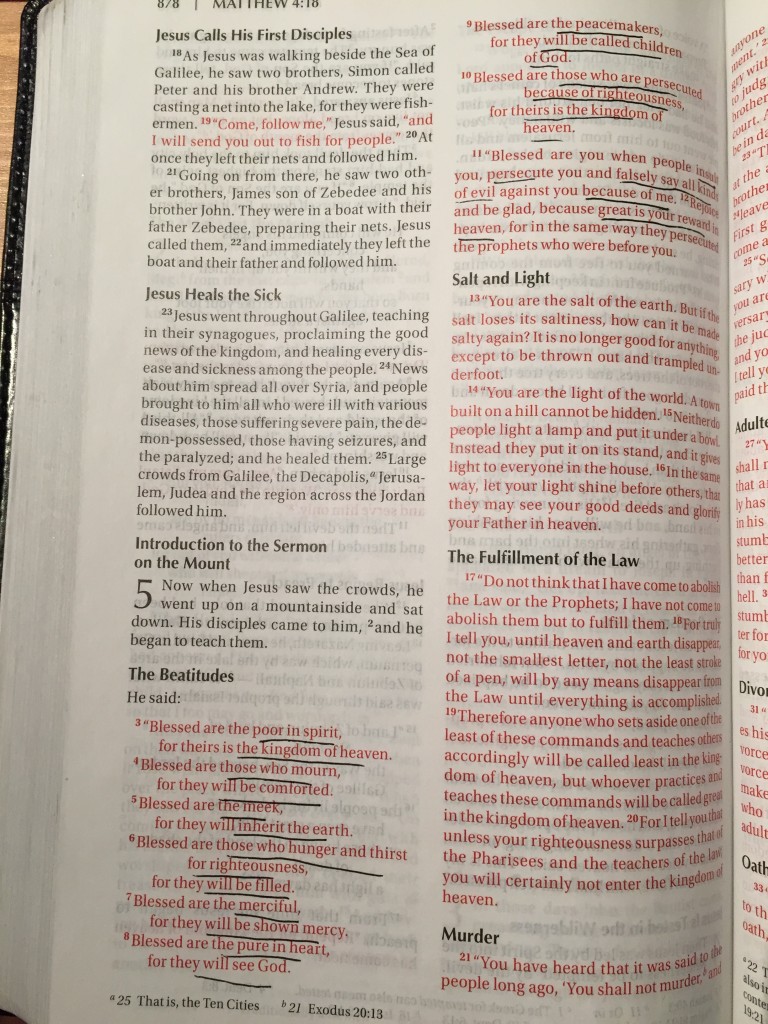I shared yesterday about my friend Chris’s new app Parallel Bible–“the world’s first social, visual Bible”–and I’d encourage you to check it out; it’s pretty cool.
about my friend Chris’s new app Parallel Bible–“the world’s first social, visual Bible”–and I’d encourage you to check it out; it’s pretty cool.
This week I’ve also been diving into an ancient practice of reading the Bible called lectio divina–or “divine reading” in Latin. It’s one way that Christians over the centuries have used to hear and listen to God through the words of Scripture, consciously and intentionally laying down our agendas before coming to the text–or at least, allowing those agendas to be changed and transformed by God through what we find in the Bible. Essentially, it’s praying the Scriptures. If you’ve never tried it before, give it a shot; I’m in the process of building it into my life (and I’m definitely feeling like I should have a long time ago!).
I’ve been reading Ruth Haley Barton’s Sacred Rhythms, and she has a great summary of how to go about doing it, so I’ll just let her explain:
Choose a passage (six to eight verses); it can be part of your normal reading plan, a passage you select for today or a passage from the lectionary reading for this week. Use it to enter prayerfully into the lectio process. Following are very detailed instructions to help you learn the moves.
Preparation (Silencio). Take a moment to come fully into the present. With your eyes closed, let your body relax, and allow yourself to become consciously aware of God’s presence with you. Express your willingness (or your willingness to be made willing) to hear from God in these moments by using a brief prayer such as “Come Lord Jesus,” or “Here I am,” or “Speak, Lord, for your servant is listening.”
Read (Lectio): Listen for the word or the phrase that is addressed to you. Turn to the passage and begin to read slowly, pausing between phrases and sentences. You may read silently, or you may find it helpful to read the passage aloud, allowing the words to echo and resonate, sink in and settle into your heart. As you read, listen for a word or phrase that strikes you or catches your attention. Allow a moment of silence, repeating that word or phrase softly to yourself, pondering it and savoring it as though pondering the words of a loved one. This is the word that is meant for you. Be content to listen simply and openly, without judging or analyzing.
Reflect (Meditatio): How is my life touched by this word?Once you have heard the word that is meant for you, read the passage again, and listen for the way this passage connects with your life. Ask, What is it in my life right now that needs to hear this word? Allow several moments of silence following this reading, and explore thoughts, perceptions and sensory impressions. If the passage is a story, perhaps ask yourself, Where am I in this scene? What do I hear as I imagine myself in the story or hear these words addressed specifically to me? How do the dynamics of this story connect with my own life experience?
Respond (Oratio): What is my response to God based on what I have read and encountered? Read the passage one more time, listening for your own deepest and truest response. In silence after the reading, allow your prayer to flow spontaneously from your heart as fully and as truly as you can. At this point you are entering into a personal dialogue with God, “sharing with God the feelings the text has aroused, … feelings such as love, joy, sorrow, anger, repentance, desire, need, conviction, consecration. We pour out our hearts in complete honesty, especially as the text has probed aspects of our being and doing in the midst of various issues and relationships.” Pay attention to any sense that God is inviting you to act or to respond in some way to the word you have heard. You may find it helpful to write your prayers or to journal at this point.
Rest (Contemplatio): Rest in the Word of God. In this final reading you are invited to release and return to a place of rest in God. You have given your response its full expression, so now you can move into a time of waiting and resting in God’s presence, like the weaned child who leans against its mother (Psalm 131:2). This is a posture of total yieldedness and abandon to the great Lover of your soul.
Resolve (Incarnatio): Incarnate (live out) the Word of God. As you emerge from this place of personal encounter with God to life in the company of others, resolve to carry this word with you and to live it out in the context of daily life and activity. As you continue to listen to the word throughout the day, you will be led deeper and deeper into its meaning, until it begins to live in you and you enflesh this word to the world in which you live. As a way of supporting your intent to live out the word you have been given, you may want to choose an image, a picture or a symbol that you can carry to remind you of it.
– Ruth Haley Barton, Sacred Rhythms, 59-61
Pingback:Making space to be reminded of grace | JUSTIN FUNG